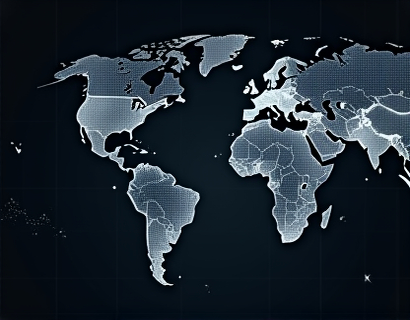Elevate Business Performance with Cutting-Edge Tech: Tailored Solutions for Efficiency, Innovation, and Sustainable Growth
In the rapidly evolving business landscape, companies are constantly seeking ways to stay ahead of the curve. The integration of cutting-edge technology solutions can significantly enhance efficiency, drive groundbreaking innovation, and support sustainable growth. These advancements not only help businesses maintain a competitive edge but also ensure long-term success in an increasingly digital and interconnected world.
The modern business environment is characterized by rapid technological advancements, shifting consumer preferences, and global economic dynamics. To navigate these complexities, organizations must leverage innovative technology solutions that are tailored to their specific needs. Such solutions can streamline operations, optimize resource allocation, and foster a culture of continuous improvement and innovation.
Enhancing Efficiency Through Advanced Technology
One of the primary benefits of adopting cutting-edge technology is the significant improvement in operational efficiency. Automation tools, for instance, can automate repetitive and time-consuming tasks, allowing employees to focus on higher-value activities. Robotic Process Automation (RPA) is a prime example, where software robots mimic human actions to perform routine tasks, reducing errors and increasing productivity.
Additionally, cloud computing has revolutionized the way businesses manage their data and applications. By moving to the cloud, companies can scale their resources up or down based on demand, reducing infrastructure costs and improving access to the latest technologies. Cloud-based collaboration tools also enable seamless communication and project management, breaking down silos and fostering a more cohesive work environment.
Driving Innovation with Emerging Technologies
Innovation is the lifeblood of any successful business, and technology plays a crucial role in fostering a culture of creativity and experimentation. Emerging technologies such as artificial intelligence (AI), machine learning, and the Internet of Things (IoT) offer unprecedented opportunities for businesses to innovate and differentiate themselves in the market.
AI, for example, can analyze vast amounts of data to uncover insights that humans might miss. These insights can inform strategic decisions, optimize supply chains, and enhance customer experiences. Machine learning algorithms can predict trends and behaviors, enabling businesses to proactively adapt to market changes. IoT devices, on the other hand, can provide real-time data on equipment performance and environmental conditions, leading to predictive maintenance and improved operational reliability.
Furthermore, blockchain technology offers a secure and transparent way to manage transactions and supply chain processes. By ensuring data integrity and traceability, blockchain can build trust with customers and partners, while also reducing fraud and errors.
Supporting Sustainable Growth Through Technology
Sustainability is no longer a niche concern but a core business imperative. Technology can play a pivotal role in helping organizations achieve their sustainability goals while driving growth. Smart energy management systems, for instance, can monitor and optimize energy usage, reducing waste and lowering costs. These systems can integrate with renewable energy sources, further minimizing the environmental footprint of business operations.
Sustainability reporting and compliance can also be streamlined through advanced software solutions. These tools can automate the collection and analysis of sustainability data, ensuring accurate reporting and compliance with regulatory requirements. By leveraging these technologies, businesses can demonstrate their commitment to sustainability, enhancing their reputation and attracting environmentally conscious customers and investors.
Case Studies: Real-World Applications
To illustrate the practical benefits of these technology solutions, consider a few real-world examples. A manufacturing company implemented RPA to automate its quality control processes, resulting in a 30% reduction in errors and a 25% increase in production speed. Another retail business adopted AI-driven customer analytics to personalize shopping experiences, leading to a 20% increase in customer retention and a 15% boost in sales.
A logistics firm integrated IoT sensors into its fleet to monitor vehicle performance and driver behavior. This initiative not only improved fuel efficiency by 10% but also reduced maintenance costs by 15%. Lastly, a financial services company utilized blockchain to streamline its cross-border payments, reducing transaction times from days to minutes and significantly lowering fees.
Building a Technology-Driven Culture
For technology solutions to truly elevate business performance, it is essential to cultivate a culture that embraces innovation and continuous learning. Organizations should invest in training and development programs to upskill their workforce, ensuring they are equipped to leverage new technologies effectively. Encouraging a mindset of experimentation and risk-taking can lead to breakthrough innovations that set the business apart from its competitors.
Leadership plays a crucial role in fostering this culture. Leaders should champion change, communicate the vision clearly, and provide the necessary resources and support. By doing so, they can create an environment where employees feel empowered to explore new ideas and drive meaningful change.
Conclusion
In conclusion, the integration of cutting-edge technology solutions is not just an option but a necessity for businesses aiming to thrive in today's dynamic market. By enhancing efficiency, driving innovation, and supporting sustainable growth, these technologies can provide a significant competitive advantage. Organizations that embrace these advancements and foster a culture of innovation will be better positioned to achieve long-term success and resilience.











































